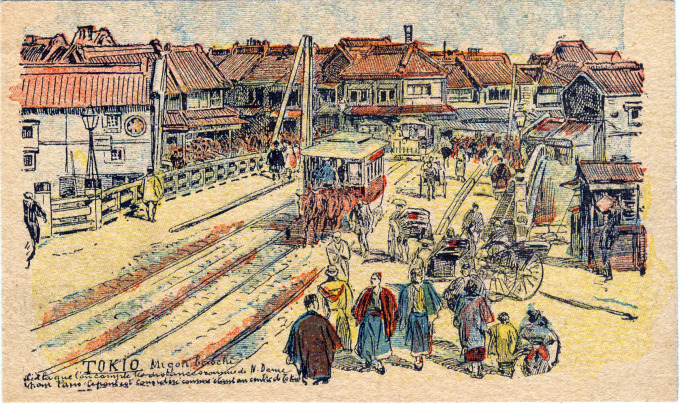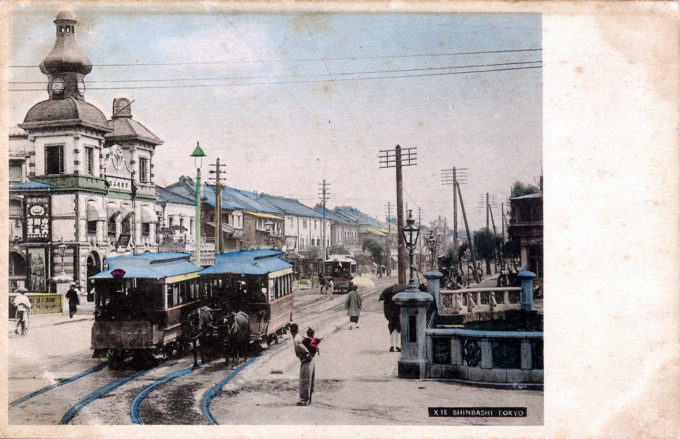See also:
Tokyo Streetcars (Tokyo Toden), c. 1910-1920.
Nihonbashi Bridge
“Horse-drawn omnibuses and trolleys, the idea for which came from the West, formed Tokyo’s first mass transit system and helped to establish the city’s traffic patterns and rules on how passengers and drivers behave.
“While most rules were promulgated to ensure safety, some regulated fares, and others prescribed proper manners for drivers … According to one rule, drivers were required to immediately stop their vehicles, alight, and salute as nobility and army officers passed.
“The horse-drawn vehicles were affectionately nicknamed Entaro after Tachibanaya Entaro, a Rakugo [storyteller] performer famous for imitating the warning calls of the drivers and braying like a donkey.”
– Tokyo In Transit: Japanese Culture on the Rails and Road, Alisa Freedman, 2012
“The Tokyo Horse-Drawn Railway was founded in 1880 and began service in 1882 between Shimbashi and Nihonbashi, a commercial area near the Ginza. Two horses pulled a carriage that held up to twenty-eight passengers and traveled along two laid rails. Service was later extended to Asakusa. Electric street cars would begin to replace horse-drawm trams in 1903.”
– Wikipedia




Pingback: Tokyo Streetcars (Tokyo Toden), c. 1910-1920. | Old Tokyo